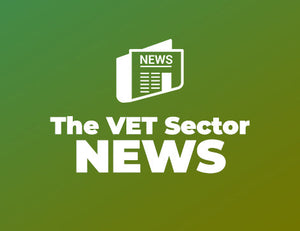
The Comprehensive Guide to Buying an RTO
SUKH SANDHUA Registered Training Organisation (RTO) is a valuable asset in the vocational education and training (VET) sector. It provides nationally recognised qualifications and training, catering to the needs of students, employees, and industries. As the demand for quality vocational training continues to grow, many individuals and businesses are considering buying an RTO. This article will explore the process of buying an RTO, including its regulations, steps, and potential challenges.
Understanding RTOs and Their Regulations
Before delving into the process of buying an RTO, it is essential to understand what an RTO is and the regulations governing its operation. An RTO is a training provider that has been granted registration by regulatory bodies such as the Australian Skills Quality Authority (ASQA) to deliver nationally recognised qualifications and training. RTOs must comply with the Standards for Registered Training Organisations (RTOs) 2015, which outline the requirements for registration, training, and assessment.
Can You Buy an RTO?
Yes, you can buy an RTO, but there are specific rules and requirements in place. When an RTO is sold, its business operations can be transferred to another person or corporation. However, the registration itself cannot be transferred to the purchasing entity. Consequently, if the buyer is not already an RTO, they must apply for initial registration with ASQA. If the buyer is already an RTO, they must apply to ASQA to extend their scope of registration to cover any additional qualifications they wish to deliver.
Steps to Buying an RTO
The process of buying an RTO involves several steps, including due diligence, negotiations, and regulatory compliance. Here is a step-by-step guide:
Step 1: Research and Due Diligence
Before purchasing an RTO, it is crucial to conduct thorough research and due diligence. This includes understanding the RTO's financial position, compliance history, training resources, and student enrolment data. It is also essential to assess the RTO's reputation, industry partnerships, and potential growth opportunities.
Step 2: Valuation and Negotiations
When you have identified an RTO that meets your requirements, the next step is to determine its value. This can be achieved through a business valuation, which takes into account factors such as historical financial performance, future projections, and the value of assets and liabilities. Once the valuation is complete, negotiations can begin to agree on the sale price and terms.
Step 3: Sale Agreement and Transition Plan
Once the sale price and terms have been agreed upon, a sale agreement must be drafted, outlining the details of the transaction, including payment terms, warranties, and indemnities. A transition plan should also be developed to ensure a smooth handover of the RTO's operations, including transferring staff, resources, and student records.
Step 4: Regulatory Compliance
As mentioned earlier, the purchasing entity must apply for initial registration with ASQA if they are not already an RTO. This process involves submitting an application, providing evidence of compliance with the Standards for RTOs 2015, and undergoing an ASQA audit. If the purchasing entity is already an RTO, they must apply to ASQA to extend their scope of registration to cover the additional qualifications they wish to deliver.
Step 5: Finalising the Sale
Once all regulatory requirements have been met, and ASQA has approved the necessary applications, the sale can be finalised. This includes transferring ownership of the RTO's assets, updating the relevant registrations and licenses, and notifying students, staff, and other stakeholders of the change in ownership.
Challenges and Considerations
Buying an RTO comes with several challenges and considerations that must be addressed to ensure a successful transaction. Some of these challenges are mentioned below:
Regulatory Compliance and RTO Registration
One of the primary challenges in purchasing an RTO is ensuring regulatory compliance. When an RTO is sold, its registration cannot be transferred to the purchasing entity. If the buyer is not already an RTO, they must apply for initial registration with ASQA. If the buyer is already an RTO, they must apply to ASQA to extend their scope of registration to cover any additional qualifications they wish to deliver.
The registration process requires a thorough understanding of the Standards for Registered Training Organisations (RTOs) 2015, which outline the requirements for registration, training, and assessment. Ensuring compliance with these standards is crucial for a smooth transaction and the ongoing success of the RTO.
Due Diligence and Valuation
Before purchasing an RTO, it is essential to conduct thorough due diligence. This involves understanding the RTO's financial position, compliance history, training resources, and student enrolment data. It is also crucial to assess the RTO's reputation, industry partnerships, and potential growth opportunities.
Valuing an RTO is another challenge that must be addressed. A business valuation takes into account factors such as historical financial performance, future projections, and the value of assets and liabilities. Understanding the RTO's worth is vital for negotiating the sale price and terms.
Sale Agreement and Transition Planning
Drafting a comprehensive sale agreement is essential when purchasing an RTO. The agreement should outline the details of the transaction, including payment terms, warranties, and indemnities. A well-drafted agreement can help protect the buyer and seller's interests and minimise potential disputes.
Transition planning is another crucial consideration. A smooth handover of the RTO's operations is vital for its continued success. The transition plan should address issues such as transferring staff, resources, and student records. It should also ensure that the RTO's processes and procedures are updated to reflect the new ownership.
Staff Retention and Training
Retaining experienced and qualified staff is crucial for the ongoing success of an RTO. The purchasing entity must consider staff retention strategies, including addressing any concerns and providing opportunities for professional development. Additionally, new owners may need to invest in training to ensure that staff are familiar with any changes to the RTO's processes and procedures.
Integrating Systems and Processes
The purchasing entity may need to integrate the RTO's systems and processes with its existing operations. This can be a complex and time-consuming process, requiring careful planning and project management. The integration process should address areas such as IT systems, financial management, student records, and quality assurance processes.
Managing Stakeholder Expectations
Managing the expectations of various stakeholders, including students, staff, industry partners, and regulatory bodies, is essential when purchasing an RTO. The purchasing entity should develop a communication plan to keep stakeholders informed of the changes in ownership and any potential impacts on the RTO's operations. Transparent communication can help maintain stakeholder confidence and ensure a smooth transition.
Potential Risks and Contingencies
Purchasing an RTO involves inherent risks, such as changes in government policies, fluctuations in student enrolment, and shifts in industry demand. It is essential to identify and assess these risks and develop contingency plans to address each of the risks.
Buying an RTO is a massive decision and you need to ensure you make the right choice. It is also important to understand that it is not just another business acquisition. This is a huge step for your organisation and your staff. If you are considering purchasing an RTO, you must have a clear idea of the potential benefits and risks. CAQA can assist you throughout these processes, please contact us for more information.
RECENT POSTS





